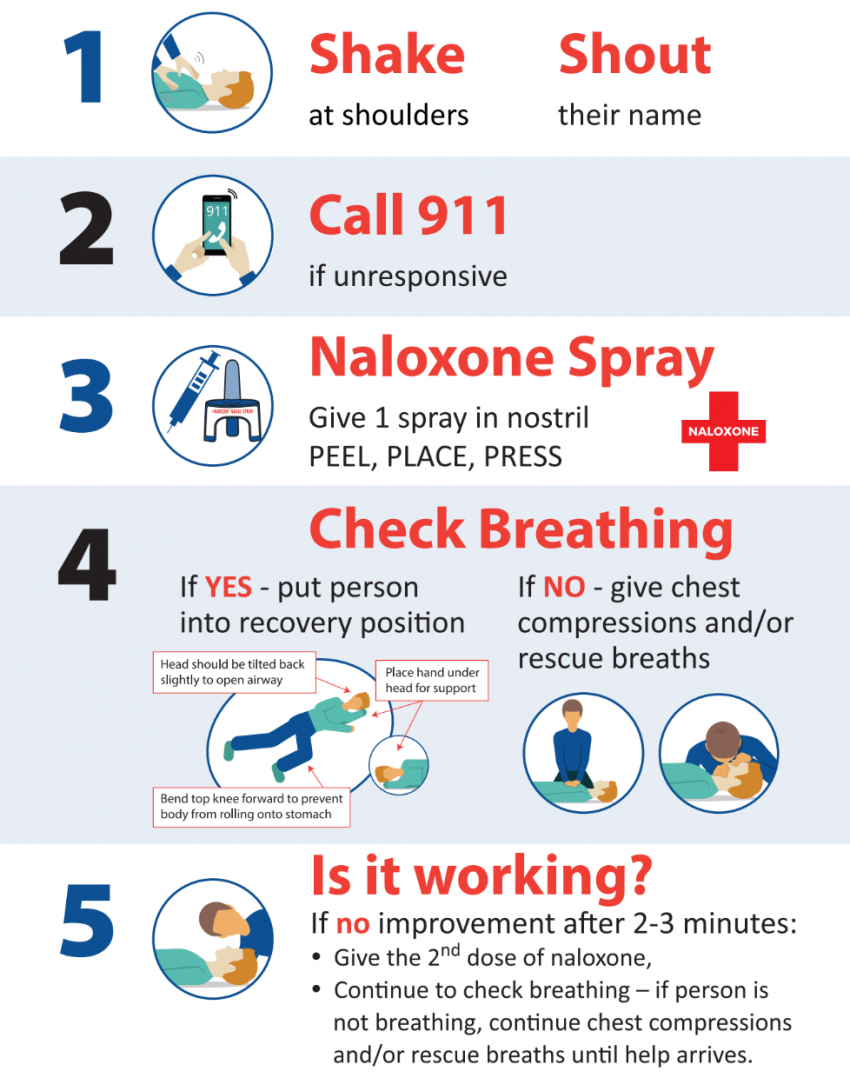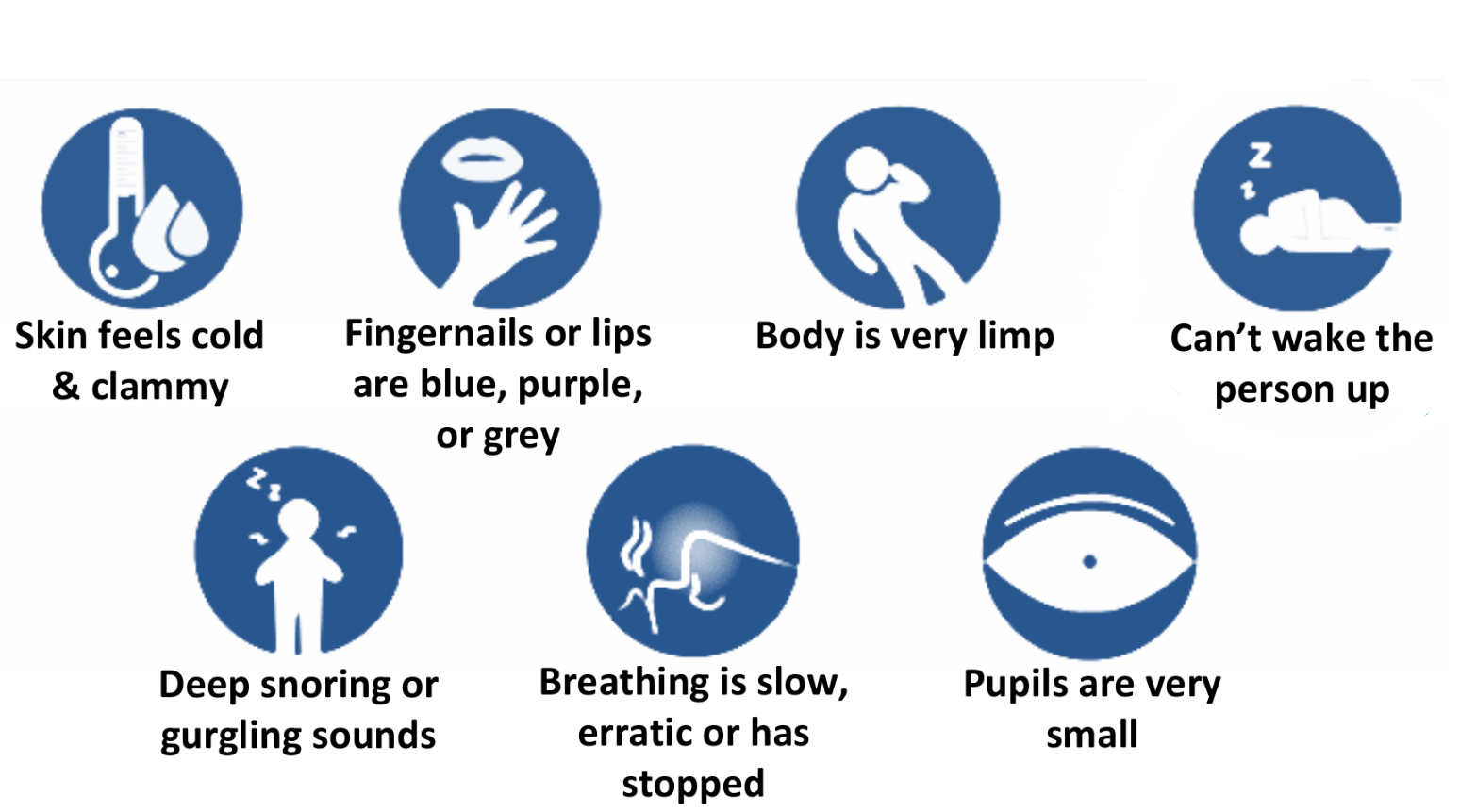Opioids
What are Opioids?
Opioids are a family of drugs that have pain relieving effects. Opioids are depressant drugs, which means that they slow down basic functions in the body like heart rate, blood pressure and breathing. They can also produce euphoria, an experience of pleasure. Opioids can be either natural or synthetic, and are available through both prescription and unregulated sources. Examples of opioids include:
- Fentanyl
- Heroin
- Hydrocodone (Vicodin)
- Hydromorphone (Dilaudid)
- Oxycodone (OxyContin)
- Morphine
- Methadone
- Percodan (Percocet)
- Codeine
Overdoses and Poisonings
“Overdose” is a term used to describe when a person consumes too much of a drug (or combination of drugs) than the body can handle, and basic life functions (e.g. breathing) cannot be controlled. It implies that a person knows what the dose of the drug is and chooses to take too much. In Peterborough, and across Canada, the street drug supply is unpredictable and people are often unaware of how much of a substance, or what substance they may be consuming. Many health agencies are now using “drug poisoning” instead of overdose to more accurately reflect the current context.
Signs of an opioid overdose/poisoning include:
If you see someone experiencing these symptoms, call 9-1-1 and administer naloxone. Local statistics on opioid overdoses and drug poisonings can be found on PPH’s Data Portal. PPH also invites service providers and members of the public to anonymously share information on adverse reactions to drugs using the Drug Reporting Tool.
5 Steps to Save a Life
Follow these steps to respond to a drug poisoning or overdose; it could help to save a life.

Naloxone
Naloxone is a medication that can temporarily reverse the effects of an opioid overdose/poisoning. Once given, naloxone usually starts working in 2 to 3 minutes and can last for up to 90 minutes. Since opioids can remain in the body after naloxone wears off, it is very important to call 9-1-1 in every overdose or poisoning situation.
There have been reports of needing more than 2 doses of naloxone. Carry extra kits or refills with you, in case you need them!
Did you use your Naloxone kit? Anonymously share your experience with PPH through the Drug Reporting Tool to help guide public health actions and keep our community safe.
- Who is Eligible for Free Naloxone?
- How to Access Naloxone at a Pharmacy
- Where to Pick Up a Naloxone Kit
- How to Use Nasal Naloxone Spray
- Naloxone Myths and Facts
Good Samaritan Act
The Good Samaritan Drug Overdose Act is a federal law that protects you, the person who is overdosing, and anyone at the scene from being charged with:
• Possession of controlled substances (e.g. drugs)
• Breaches in pre-trial release, probation orders, conditional sentences, or parole related to simple possession of substances
To learn more about the Act, click here.
Educational Resources
Understanding Use of Opioids Later in Life (access multiple languages here)
If you’re concerned, there are many sources for help. Your substance use is something you should also discuss with your doctor, especially if you are taking medications.






